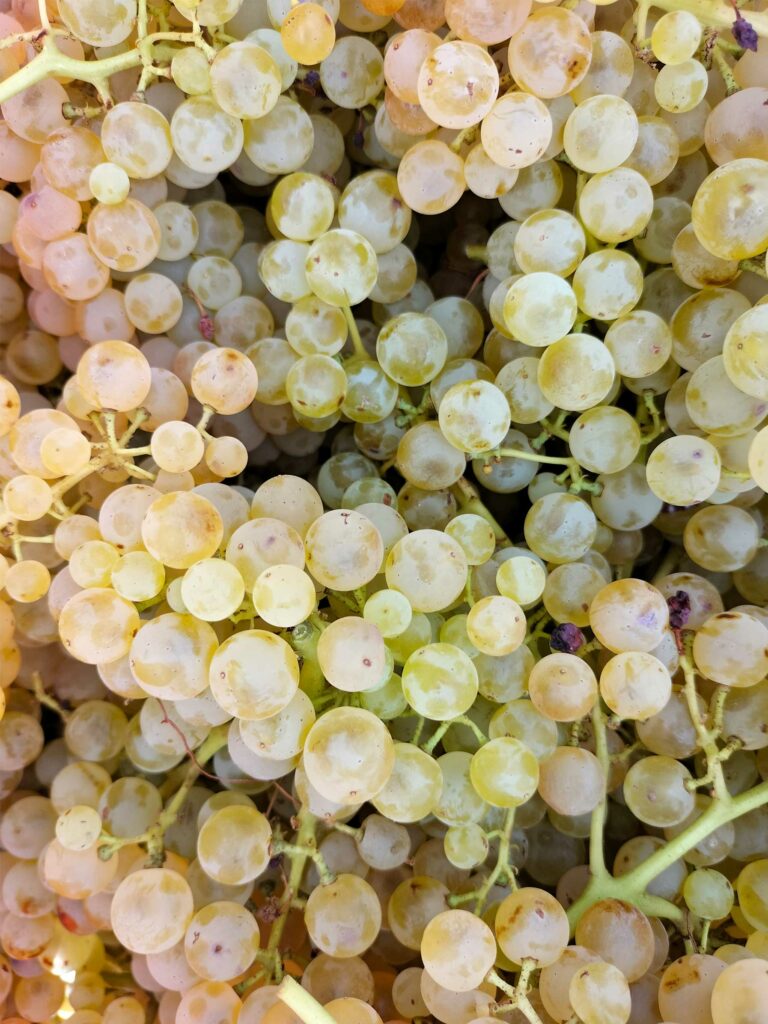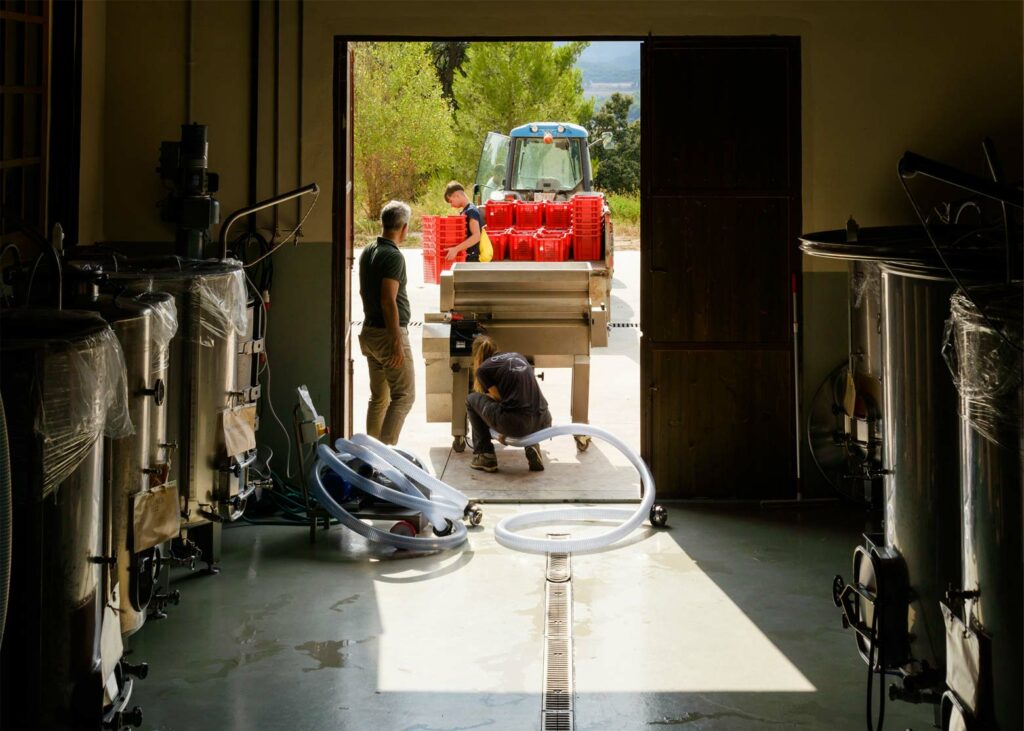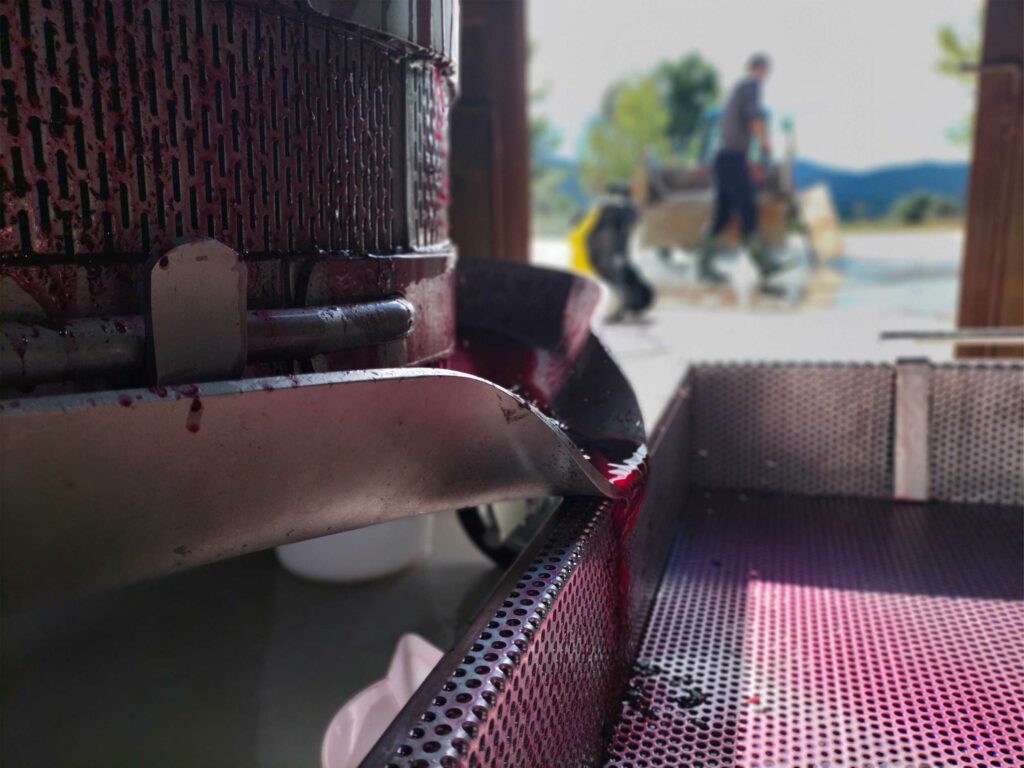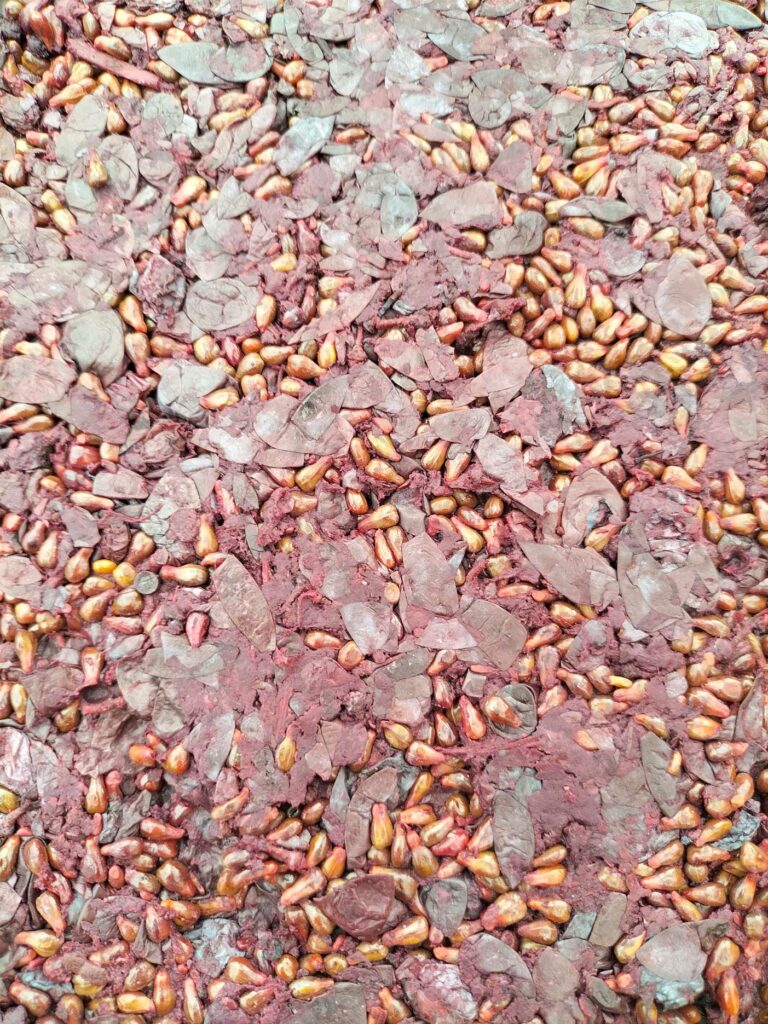We are in Monroyo, Matarraña District (Teruel). It is located on the foothills of the Ports of Beceite massif, the mountain range that forms the northeastern end of the Iberian Range and that joins it with the Catalan Coast Range.
This area could be described as half a mountain and, however, has an accidental orography: we can find in the southern limit of the term the most important elevations of the Sierra de la Cogulla, where the Punta de la Camiseta is the highest point of the term (1205 meters) and descend to 550 meters in the Tormassal strets, where the Tastavins River leaves behind the term.
Our vineyards are located in the northeast of Monroyo, bordering on the north with Rafales and on the east with Fuentespalda. They are located behind a mountainous formation with several slopes that descend towards the Tastavins River. I begin the foot of an ancient farmhouse that gives the name of the winery, “Mas de Llucia” and they flow almost until reaching the Tastavins River.
Is a young vineyard that is divided into two terraces. The closest to our farmhouse, which gives the name of our winery “Mas de Llucia,” we find the white Garnacha varieties.
While in the bank that continues the hillside, we will discover Garnacha ink. The plants of this vineyard are formed in back, Double Cordon Royat, planted under a mainly clay soil.
We call her Ploranera or Llorona, as she is the first to wake up. When there begins to be activity in the roots, the sap circulates again through the plant overflowing through the cuts of the winter pruning, as if “crying.”
Is one of the most special and ancient plots, more than 50 years, where is our Cariñena, formed in High Vase.
The vineyard falls down a gentle clay slope where rainwater accumulates in the valley, differentiating the development of the vines from the summit without having almost access to water. Due to this deficit, we find very small and concentrated grapes, which give rise to our best wine. This harvest was made to wait, as a neighbor of ours always got ahead of us, the boar. “
is a young vineyard where the protagonist is the white garnacha. The shape of the vineyard refers to its name, since it is divided into three parts with a size that increases progressively, where we find the little sister, the median and the largest.
Vines planted in clay soil and formed in back, Double Cordon Royat, accompany the fruit road that connects with the rest of the vineyards.
Consists of a vineyard of more than 50 years in clay soil, composed of two plots where we will find Garnacha ink and Macabeo, both formed with the High Vase conduction.
The closest variety to the Tastavins River is Macabeo, being the last to wake up, draws frost springs. Its plants are very balanced, reducing our intervention in the work of the vineyard, from there and referring to its age, the name Saviesa or Wisdom (in Latin sapere, taste).
Does the Soil type influence Wine?
The same variety planted in different types of soil will not develop the same under the same climate.
The depth and physical composition of the soil will determine the development and production of the vine due to the growth of the roots, the availability of water and nutrients.
In our vineyards we find mostly clay soils, having a high capacity for water retention and nutrients. They are cold soil that delay ripening and increase production.
In a smaller proportion, closer to the Tastavins valley and river, we find more sandy and warm soils, with less water retention and nutrients. Even the appearance of boulders.
The farm is located under the influence of the Mediterranean climate at an altitude of 700 meters. The highest temperatures occur in summer in the months of July and August with temperatures of 25ºC and reaching maximum temperatures of 30ºC.
In winter the coldest months are located, 11ºC, with the minimum temperatures being located in the last years in December and January almost below 0ºC. At the time of outbreak there is irrigation of spring frosts that can affect the shoots of the earliest varieties.
Strong rainfall concentration in autumn and spring, whose average annual rainfall in recent years reaches 500 mm. These seasons coincide with the wettest periods, where we must be alert in the vegetative period and the harvest to take care of the health of the plant.
The altitude, the hillside vineyards and the soil give us ideal conditions to cope with climate change since the ripeness of the grape is later, when the temperatures are milder and allows a better evolution of the ripening.
Humidity, we’re on the hillside. insolation, light is related to sugar, anthocyans and tannins.
Respect and sustainability of the environment is very important to take care of the environment around us and what we leave to the new generations.
The work that is done in the vineyard is manual, where it allows us to see what is happening in the plant.
Respect and sustainability of the environment is very important to take care of the environment around us and what we leave to the new generations.
The work that is done in the vineyard is manual, where it allows us to see what is happening in the plant.
Harvest Day is one of the most important moments of the whole year. Saves the effort of the previous work to achieve a quality grape and determines the result of the wines of that vintage.
How do we make this decision? We have a small laboratory, where we determine the sugar and acidity of all varieties every week in the last stage of ripening, after the vert (the color change of the grape).
During the ripening of the grape, sugar increases over time and acidity, on the contrary, decreases. We’re looking for a balance between the two.
When we approach that balance of sugar and acidity, we go to the vineyard and taste the grapes.
The grape consists of pulp, skin and nuggets. The ripening of each of these parts does not happen at the same time, we will have to evaluate a balance between them all to decide when it is ready.
The moment we see that all these details are to be found in harmony, the day of harvest is decided.
Once Harvest Day has been decided, we pick the grape manually. Why?
Because, besides respecting the integrity of the grape, it allows us to see and touch the clusters, we can select the healthy grape and separate the lower quality grape.
Healthy clusters with adequate maturity are collected in stackable boxes of grid to avoid breaking the clusters and that unwanted preferments occur. These boxes are transported to the cellar where the grape is worn and squeezed.
In the case of white wine, we perform a pre-pressing cryomaceration to extract the aromas of the grape skins. We are looking for a very soft pressing to obtain a quality must that does not lose its freshness. After pressing begins fermentation, controlled at a constant temperature, where yeasts transform sugar into alcohol.
At the end of fermentation, the yeasts fall to the bottom of the tank and we can start with rearing on lees. The lees are formed mainly by dead yeasts, where in their structure are the manoproteins, which contribute to the body wine and unctuousness. The breeding on lees consists of resuspending the lees from the bottom of the tank to obtain more complex wines.
In the production of red wine, fermentation occurs in contact with the skins and nuggets of the grape, where we obtain the color, tannins and aromas. When we decide to separate the skins and nuggets, we first drain the wine and then gently press the solid parts.



